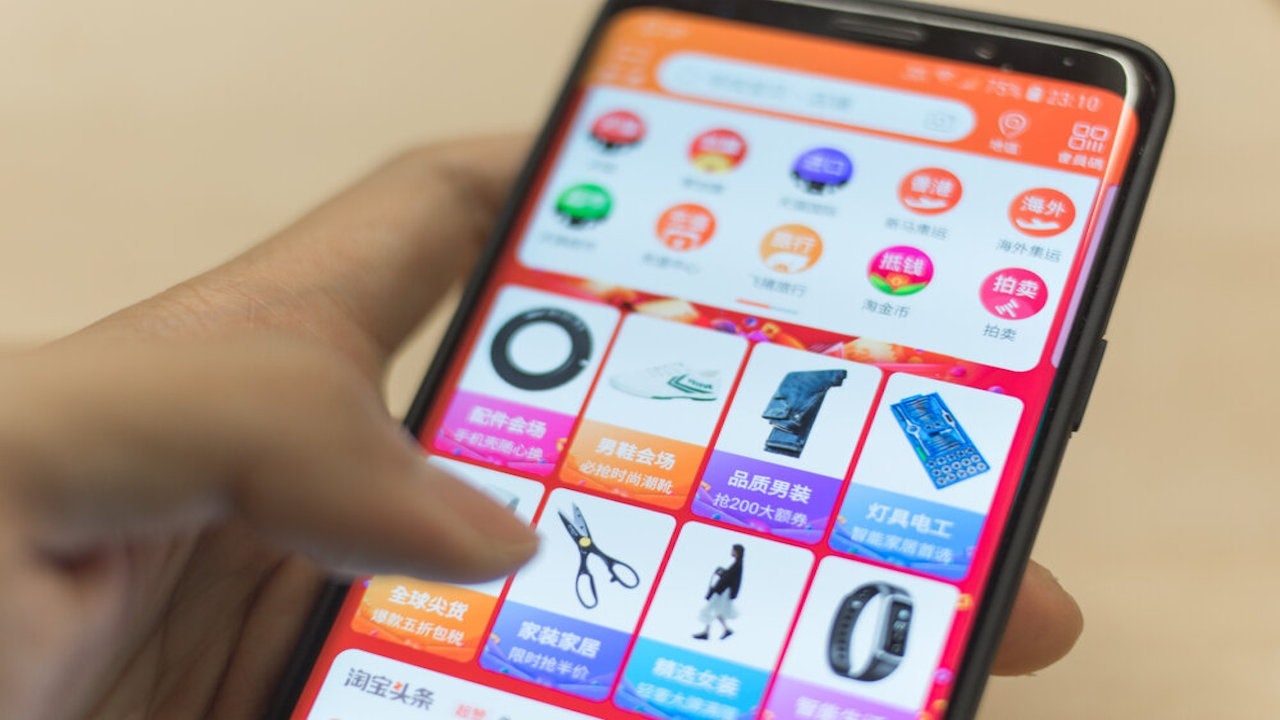With housebound consumers around the world doing more high-end shopping online this year, luxury’s longstanding resistance to embracing e-commerce has dissolved as major online retail platforms, luxury groups, and brands have rushed to invest in the space and ensure they’re not left behind.
During this pandemic year — which has kept retailers’ doors closed and consumers glued to their smartphones and laptops — online luxury purchases rose to $58 billion from $39 billion in 2019, according to a recent report by Bain & Company. E-commerce’s share of the global luxury market nearly doubled at 23% this year, up from 12% last year.
Much of this growth has been led by China, whose consumers have been quick to welcome luxury e-commerce. Over the past few years, online retail giants such as Alibaba and JD.com aggressively (and successfully) courted dozens of high-end brands to launch online storefronts. And this year, China has been a rare bright spot for the global luxury industry, with the market expected to account for half of the world’s luxury spending, a 37% increase from last year, according to Jing Daily.
This translates to a new wave of investments in the market by major luxury brands and groups that, in previous years, were not as open to the concept of luxury e-commerce. The most high-profile among these is certainly the $1.1 billion joint venture between Swiss luxury group Richemont, Alibaba, Artémis (the investment vehicle of France’s Pinault family, which controls Kering) and Farfetch, partly focused on the creation of a new “Farfetch China” online marketplace.
In addition to ensuring that Richemont maintains its footing to tap the crucial China market, the deal was seen as a way to compete globally (and digitally) with rival LVMH, which launched its own wholesale e-commerce platform, 24S, in 2017 and invested in Lyst one year later.
But the bigger story in the luxury e-commerce sphere is what the New York Times called “a potential realignment of the online retail landscape, currently suspended between the poles of Amazon and Alibaba.” While greater consolidation is gradually taking place in the West, involving multi-brand marketplaces such as Farfetch, Yoox Net-a-Porter, and a constellation of niche e-commerce sites, the industry’s broad focus on macro-level platforms misses the bigger emerging trend — once again, led by China — of direct-to-consumer luxury purchases and buying via social media.
The key factor to consider regarding luxury e-commerce in China — and one that either sets it completely apart from the rest of the world or makes it an industry bellwether — is that its consumers generally do not align themselves to e-commerce platforms or turn to them to discover brands. In the customer journey, the online retailer is simply the point of completion for a sale that was quite a long time in the making, with the decisionmaking process conducted through a great deal of content-commerce consumption across various other platforms (many of which are now also increasingly shifting their focus to boosting their e-commerce capabilities).
As CCI columnist Tanya Van Gastel recently noted, “China’s shoppers will not buy via internet browsers.” Everything from the discovery of a luxury item (via branded placement in a show like “Nothing But Thirty,” for example), to researching every aspect of it (such as via Xiaohongshu) and finally completing the purchase (perhaps through a livestream on Taobao Live) is often done solely on a mobile device, which of course is also used for post-delivery posting on social media.
It’s a self-contained mobile bubble that, while it includes e-commerce platforms as needed to complete sales, doesn’t entail spending a significant amount of time spent on them to learn about or discover new items.
But this isn’t news for anyone with experience in the Chinese market, where consumers regularly leapfrog digital technologies. What is more compelling is the question of whether this will be the case in the West as well. For all the talk of building luxury e-commerce coalitions or super-groups that can fend off competition from Amazon or Alibaba, consumers may simply move on, making their luxury purchases not on fussy, semi-gated luxury sites but instead via brands themselves or through social media. That would be a blow to the type of e-commerce “experience” that the platforms want to build, which is a sort of digital approximation of offline retail.
The important shift in the luxury market that e-commerce platforms can’t afford to ignore is that today’s consumers need to be entertained before they can be sold to. This is why Alibaba is poised to continue its dominance in China for years to come, as it can develop content by mining data across platforms to understand what consumers care about and who they follow, create content through its own production infrastructure, distribute it via social and streaming platforms, and, finally, close the sales loop on Tmall Luxury Pavilion. It is also a key reason why we’re currently seeing the likes of Balenciaga and Burberry jump on trends like branded video games — if you can entertain an audience, you can sell to it.
“Single-use” e-commerce platforms — boasting glorified lookbook content — can’t provide a steady stream of compelling content, leaving them at a disadvantage in a future of entertainment-first online luxury shipping. Unless a luxury e-commerce platform can consistently entertain its target audiences, all of the investment in the world will only go toward building an expensive, loss-making anachronism.
As Van Gastel points out, “From a macro perspective, there are much more brands and upstarts now than before. [The] key here is that competition has increased tremendously. So having a product or e-commerce presence is nowhere near enough to convince people to buy.”
This, Van Gastel added, is reflected in how the consumer journey keeps moving up, from a social media-led path to purchase to an entertainment-driven path to purchase — which we can see validated in Louis Vuitton’s collaborations with esports franchise League of Legends, something the luxury brand would not have considered in previous years.

